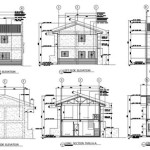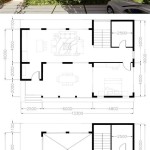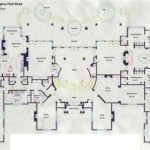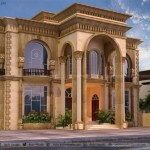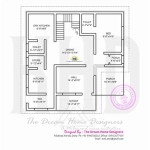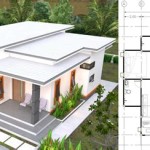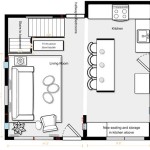Smokehouse Plans: Crafting Your Own Culinary Haven
The aroma of hickory smoke, the tantalizing sight of meat glistening with a rich, mahogany hue, and the anticipation of a flavor-packed meal—this is the essence of a smokehouse. For those passionate about grilling, smoking, and barbecuing, a smokehouse represents a culinary haven, where time-honored techniques meet modern innovation. Building your own smokehouse not only provides a dedicated space for smoking delicacies but also offers a fulfilling DIY project, a testament to your culinary ambition. This guide explores the crucial aspects of smokehouse plans, empowering you to embark on your own smokehouse construction journey.
Understanding the Essentials: Types of Smokehouses
The first step in crafting your smokehouse plan is to determine the type that best suits your needs. Smokehouses come in various forms, each with its unique advantages and drawbacks.
The most common types include:
- Offset Smokers: These are the traditional, horizontally oriented smokehouses with a firebox offset from the main chamber. They offer consistent and controlled smoke circulation.
- Vertical Smokers: As the name suggests, these are vertically stacked smokehouses, often with multiple racks for cooking larger quantities of meat.
- Barrel Smokers: Repurposed barrels offer a budget-friendly and compact smoker ideal for backyard enthusiasts.
- Electric Smokers: These modern smokers use an electric heating element for temperature control, offering convenience and precision.
Consider the size of your backyard, the type of smoking you intend to do (meat, fish, cheese), and your budget when selecting a smokehouse type.
Designing Your Smokehouse: Key Considerations
Once you've settled on the type of smokehouse, the next step is to create a detailed plan. This involves careful consideration of several factors that will influence both the construction process and the functionality of your smokehouse.
1. Size and Capacity
The size of your smokehouse should be determined by the amount of food you intend to smoke at once. Consider the number of racks, the spacing between them, and the overall capacity. It's best to err on the side of larger capacity to accommodate larger cuts of meat and future expansion of your smoking endeavors.
2. Materials and Construction
The choice of materials plays a significant role in the durability, longevity, and aesthetics of your smokehouse. Common materials include:
- Steel: Robust and heat-resistant, steel is a popular choice for smokehouse construction.
- Brick: Brick can provide excellent insulation and a traditional, rustic appearance.
- Wood: Certain hardwoods are suitable for smokehouse construction, offering natural insulation and a visually appealing finish.
Consider factors like cost, availability, and desired aesthetic when selecting materials. For example, steel offers durability but might require additional insulation, whereas brick offers natural insulation but can be more labor-intensive to install. Wood requires careful selection to ensure resistance to fire and moisture.
3. Firebox and Smoke Circulation
The firebox is the heart of the smokehouse, where the fire is ignited and the smoke is generated. The design of the firebox and the smoke circulation system are crucial for maintaining consistent temperatures and distributing smoke evenly throughout the chamber.
Key elements to consider include:
- Firebox Size: Ensure the firebox is large enough to generate sufficient heat and smoke.
- Firebox Location: The firebox should be positioned to allow for optimal smoke circulation.
- Smoke Dampers: These control the amount of smoke entering the cooking chamber, allowing for adjustments based on the desired smoke intensity.
- Smoke Stack or Vent: This allows for the escape of excess smoke and provides a controlled draft.
A well-designed firebox and smoke circulation system are crucial for achieving the desired smoke flavor and ensuring efficient cooking.
4. Temperature Control and Monitoring
Maintaining consistent temperatures is essential for successful smoking. This requires thoughtful integration of temperature control mechanisms within your smokehouse design.
Key aspects to consider include:
- Temperature Control: This can be achieved through a variety of methods, including vents, dampers, a water pan, and even electric heating elements.
- Temperature Monitoring: A reliable thermometer is essential for monitoring internal temperatures and ensuring the meat is cooked to perfection.
Consider incorporating multiple temperature control strategies to create a versatile smokehouse that can accommodate various smoking techniques and recipes.
5. Insulation and Heat Retention
Insulating your smokehouse helps maintain consistent temperatures and reduces heat loss, improving efficiency and fuel consumption. Common insulation materials include:
- Mineral Wool: Provides excellent thermal resistance and is non-combustible.
- Fiberglass: A cost-effective option, but requires careful handling due to its fibers.
- Ceramic Blanket: Offers superior heat resistance and can withstand high temperatures.
The type of insulation chosen should be compatible with the chosen materials and construction methods. Consider factors like ease of installation, fire resistance, and the desired level of insulation when making a decision.
6. Functionality and User-Friendliness
Prioritizing user-friendliness in your design will make your smokehouse a pleasure to use. This involves:
- Accessible Loading and Unloading: Ensure the smokehouse has a convenient door or opening for loading and unloading food.
- Easy Cleaning and Maintenance: Design features that facilitate cleaning and maintenance, such as removable racks or drip pans.
A well-designed smokehouse should be both functional and enjoyable to use, encouraging you to explore the art of smoking with ease.
7. Safety and Regulations
Safety is paramount when constructing a smokehouse. Consider these safety measures:
- Fire-Resistant Materials: Use fire-resistant materials for construction, particularly around the firebox.
- Smoke and Carbon Monoxide Detection: Install smoke detectors and carbon monoxide detectors as a safety precaution.
- Proper Ventilation: Ensure adequate ventilation to prevent smoke buildup and maintain air quality.
- Distance from Structures: Maintain a safe distance from flammable structures.
- Local Building Codes: Check local building codes and regulations regarding smokehouse construction.
Consulting with a qualified professional is recommended to ensure your smokehouse meets all safety standards.
Building your own smokehouse is a rewarding endeavor that allows you to create a culinary haven tailored to your preferences. By carefully considering the essential factors outlined in this guide, you can lay the foundation for a smokehouse that will enhance your grilling and smoking experiences for years to come.

Smokehouse Plans

Masonry 5695 Smokehouse

Smokehouse Plans
:max_bytes(150000):strip_icc()/smoker9faustman-9a5b81e577714097ac8972bbcbcd668a.jpg?strip=all)
Build A Smokehouse Step By Instructions With Photos

Diy Smokehouse Taste Of Artisan

Masonry Smokehouse 5352

Smokehouse Plans 8 X 6 Smoker Smoke House Building Plan Build Your Own Diy On Ebid United States 214774780
:max_bytes(150000):strip_icc()/smoker7faustman-3cfd7731d19640b79b191bf041134d44.jpg?strip=all)
Build A Smokehouse Step By Instructions With Photos

How To Build A Smokehouse Roof Myoutdoorplans

Smokehouse Plans Learn To Smoke Meat With Jeff Phillips

